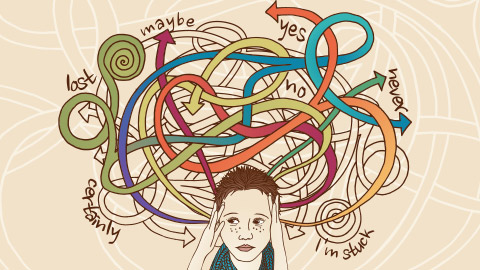Terms to know

A transgender individual is someone whose gender identity is different from the sex recorded on their birth certificate--sometimes called sex assigned at birth. For instance, a transgender man is someone who was born with female genitalia but who identifies as a man, while a transgender woman is someone who was born with male genitalia but who identifies as a woman.
Transgender persons' identities can be anywhere on the gender spectrum, including nonbinary identities such as gender fluid or genderqueer. They may also identify as gay, lesbian, bisexual, straight or any other sexual orientation.
A cisgender individual is someone whose gender identity corresponds to the sex they were designated at birth. Most people are cisgender, but some people are transgender. Transgender and cisgender are sometimes shortened to trans and cis, as in, a trans person or cis person.
Transitioning is the process whereby a person begins to live as a member of a gender that is different from the sex they were designated at birth. Some people prefer the term affirmation because individuals are publicly affirming the gender identity they have previously held internally.
The process of affirming/transitioning one's gender identity varies from individual to individual, and can involve social, legal, and/or physical aspects. A person’s gender identity does not depend on whether they are taking hormones or have undergone surgery. People who identify as transgender may or may not decide to alter their bodies hormonally and/or surgically to match their gender identity.
Before transitioning, transgender persons typically experience gender dysphoria, meaning that they experience feelings of discomfort with the sex they were assigned at birth as well as a strong and persistent identification with a different gender. Studies suggest that many transgender persons experience manifestations of gender dysphoria from a very young age.
An older term that you might still come across is transsexual, which originated in the medical and psychological communities. The term transgender has largely come to replace transsexual, as a means of distinguishing between gender identity and biological sex or sexual orientation. But transexual is still preferred by some individuals who have altered or seek to alter their bodies permanently via medical intervention.
Persons who are transgender are distinct from cross-dressers. Cross-dressers are individuals who regularly or occasionally wear the clothing socially assigned of a different gender for fun, relaxation, sexual gratification, etc., but are usually comfortable with their gender and do not wish to change it.
Transvestite is a term that is no longer used and is considered pejorative; originally, it had the same meaning that the preferred term “cross-dresser” does today.
The term "drag" refers to the theatrical performance of one or multiple genders via dressing in the clothing of a different gender, or in a manner different form how one would usually dress. For instance, drag queens perform in highly feminine attire. Drag kings perform in highly masculine attire. Drag often presents a stereotyped image. Individuals who dress in “drag” may or may not consider themselves to be transgender.
